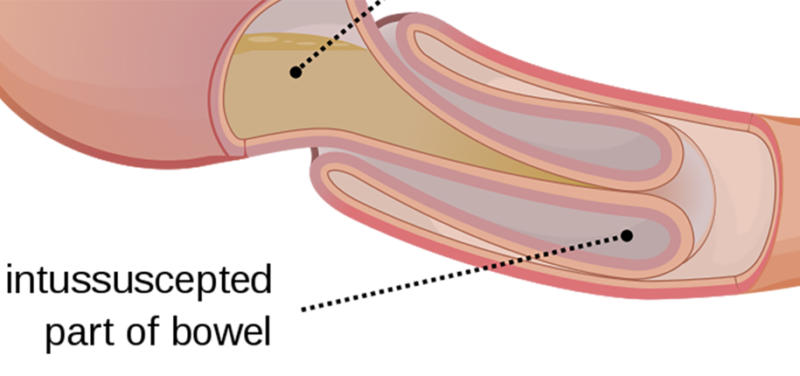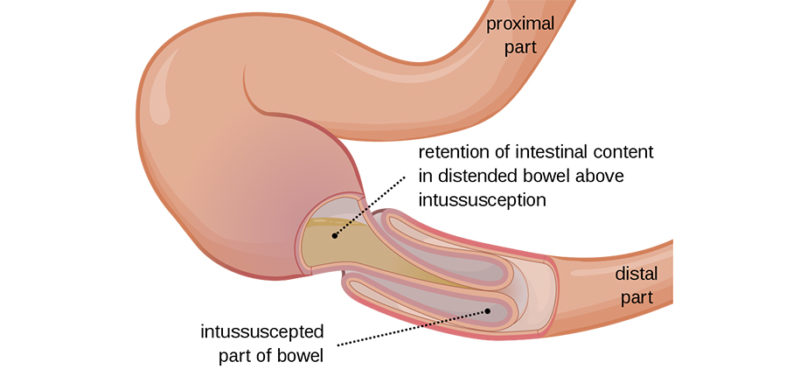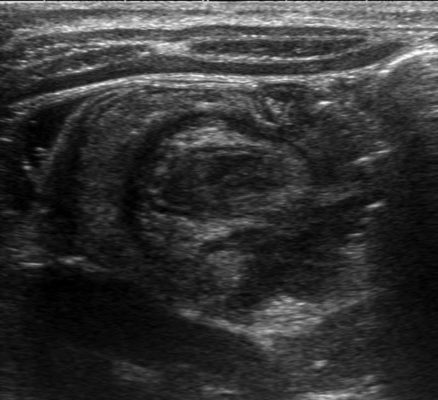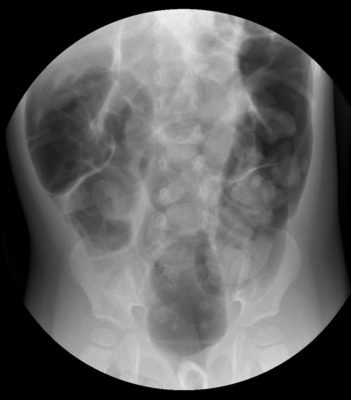
Frequently Asked Questions about intussusception

Intussusception is a serious condition in which a segment of the bowel acts like a telescope, folding into the adjacent segment. This is a problem for two reasons. First, digested material cannot pass through the telescoped area causing a blockage. Second, blood is not able to get to the affected bowel segment. If this problem is not fixed, the affected part of the bowel can die.
How old are children who get intussusception?
This disease may occur at any age, but usually affects children from ages 3 months to 3 years.
Why do children get intussusception?
Intussusception is usually caused by the body’s reaction to a viral illness. Some children are more prone to getting an intussusception because of a cyst or because of the way their intestines developed.
What are the symptoms of intussusception?
Children may have multiple attacks where they are fussy or irritable. Parents may notice that their child has bloody diarrhea or poop that looks like it has bloody mucous. Older children may describe crampy abdominal pain.
What is the best method to diagnose intussusception?
Depending on your child’s symptoms, your doctor may order an x-ray or an ultrasound of your child’s belly.
What is the treatment for intussusception?
Intussusception is usually treated by radiologists. At Cincinnati Children’s, we perform a procedure called an air-contrast enema. Under x-ray guidance, a tube is inserted into your child’s bottom and air is inflated. The radiologist pays close attention to the pictures as he or she is inflating air through the tube. The air creates pressure that helps to push the bowel backwords and unwind the telescoped segment. Sometimes, the radiologist has to try this a few times until it is successful.
In some children, the blockage cannot be fixed with air. If that happens, your child will need surgery to fix the blockage.


Image: Radiologists fix an intussusception with an air-enema. During the enema, the radiologist will inflate air through a tube in your child’s bottom. The air creates pressure that pushes the blockage away. The radiologist watches the pictures to see the air inflating the intestines and removing the blockage.
Contributed by Dr. Reem Hasweh and edited by Janet Adams, (ADV TECH-ULT).
